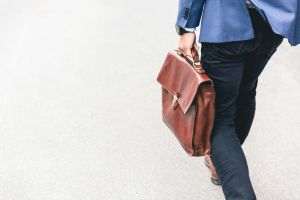A deputy governor of the Romanian National Bank (NBR), together with other banking officials of 16 European countries, yesterday attended a conference in Vienna, to discuss the issue of the capitalization of banks in the Eurozone and the potential negative impact it could have on emerging countries, according to Adrian Vasilescu, advisor to the governor of the NBR.
He said: "The conference in Vienna brings about the 17 countries of the Eurozone. The National Bank of Romania is represented by a deputy governor, whose name we are not going to disclose. Issues concerning the capitalization of the banks in the Eurozone are being discussed, as well as how to avoid having this measure affect the countries in the emerging zone".
Adrian Vasilescu did not provide any further details, saying that the officials in Vienna have asked for the information from the conference to remain confidential.
According to sources quoted by Bloomberg, the talks in Vienna concern the proposal of the Austrian Central Bank to limit the risk taken on by Austrian banks.
The meeting in Vienna brought together high officials of the Austrian Central Bank and the Austrian Financial Markets regulator (FMA), the European Banking Authority as well as officials from several countries, including Romania, Hungary and the Czech Republic, the quoted sources said.
Yesterday, the officials were going to discuss the regulations concerning capital and liquidity, which had been proposed last year by the Austrian Central Bank and the FMA, which require Erste Group Bank, Raiffeisen Bank International and UniCredit Bank Austria to limit lending in Eastern Europe to 110% of the deposits and financing attracted from local sources, which amounts to making new lines of credit from their parent banks conditional on the resources obtained from the markets in question, according to the aforementioned sources.
The proposals, meant to ensure that Austria maintains its AAA rating, were criticized by Eastern European officials, concerned that such restrictions of lending could cause a slowdown of the economic growth in the region.
The market regulators in the emerging Europe region are concerned that the major banking groups in Europe will limit or even reduce their exposure to the emerging countries, qualified as having higher risk, in order to more easily meet the new capital adequacy requirements, which involves that by the end of H1 2012 they need to have a tier I capital ratio of 9% in relation to assets weighted based on risk.
• Der Standard: Austria's measures concerning lending in Eastern Europe may be in violation of the EU directives
The European Commission (EC) is reviewing whether the regulations introduced in November by the Austrian authorities, intended to cap the exposure of the Austrian banks to Eastern Europe violate the EU directives concerning the free circulation of capital, according to Austrian newspaper "Der Standard", quoted by Bloomberg.
Several Finance Minister in Eastern Europe have "alerted" the Commission, through letters, that the measures in question could affect economic growth in the region, the publication writes, without disclosing the sources for this information.
• Raiffeisen, Volksbank, Erste Group Bank AG - among the biggest lenders in Eastern Europe
Raiffeisen, Volksbank, Erste Group Bank AG and other Austrian banks, including Bank Austria AG, a division of Unicredit, are among some of the biggest creditors in Eastern Europe, having lent 266 billion, according to data published by the Bank of International Settlements (BIS) at the end of June 2011. Austrian banks with exposure to Eastern Europe also need to comply with the new regulations of the Basel Committee on Banking Supervision (BCBS) by the end of next year.
Sources claim that Andreas Ittner, the head of the Oesterreichische Nationalbank - OeNB, will try to use the reunion to obtain the support of his Eastern European peers, after the new Austrian regulations came under criticism from the Eastern European governments.
At the end of 2011, Romanian president Traian Băsescu said that he wants to believe that the announcement of the National Bank of Austria concerning the reduction of capital flows from Austrian commercial banks to countries outside the Eurozone area was a mistake or the result of a failure to understand the effects it could have. Traian Băsescu expressed his concern over the possible behavior of some banks, after the Central Bank in Vienna advised Austrian commercial banks to reduce their financing to their branches in Central and Eastern Europe.
• The Vienna 2.0 initiative: a new emergency plan for banks in Eastern Europe
The European Bank for Reconstruction and Development (EBRD) is drafting a new initiative which is intended to prevent the contagion of the sovereign debt crisis which hit Greece and Italy, to Eastern Europe.
The media calls the new emergency plan of the EBRD the Vienna 2.0 initiative, which is intended to allow lending to Eastern Europe to continue for the duration of the current sovereign debt crisis in the Eurozone. A similar plan was also drafted in 2008, after the bankruptcy of American bank Lehman Brothers. At the time, banks in Western countries decided, through the Vienna initiative, not to pull their capital from Eastern Europe, and the initiative launched by banks and governments in the capital of Austria proved useful and helped overcome the funding deficit in Eastern Europe.
Like Erik Berglöf, chief-economist at the EBRD said to Austrian newspaper "Die Presse", the current state of things is not comparable to the market crash of 2008, but it is nevertheless dramatic, especially for Eastern Europe. Berglöf said that "cross-border banking operations have to face a challenge" and that is why the European Banking Authority has requested that Western European financial groups increase the capital adequacy ratio to 9%. This will force them to seek new funds with a total value of approximately 100 billion Euros, in order to face the crisis. Those that fail to do so will be forced to lower their risks and lending. With a market share of at least 22%, Austrian banks are deeply involved in Eastern Europe. The EBRD is concerned that the banks of Western Europe will impose higher capital requirements to the detriment of their Eastern Europe subsidiaries and will stop financing Eastern Europe. Western banks have currently deposited more than 400 billion Euros with the ECB. Some of them have severely limited their operations in Eastern Europe, whereas other have announced that they would withdraw from the region. German bank Commerzbank has announced that it would no longer lend outside Germany and Poland.
Given this context, in mid-November 2011, EBRD president Thomas Mirow issued an urgent appeal, which was published in Frankfurter Allgemeine Zeitung (FAZ), urging banks not to abandon Eastern Europe. Western Europe must continue to support Eastern Europe, just like in 1989, after the fall of communism, and continue its investments in the region, even in times of crisis.






























































